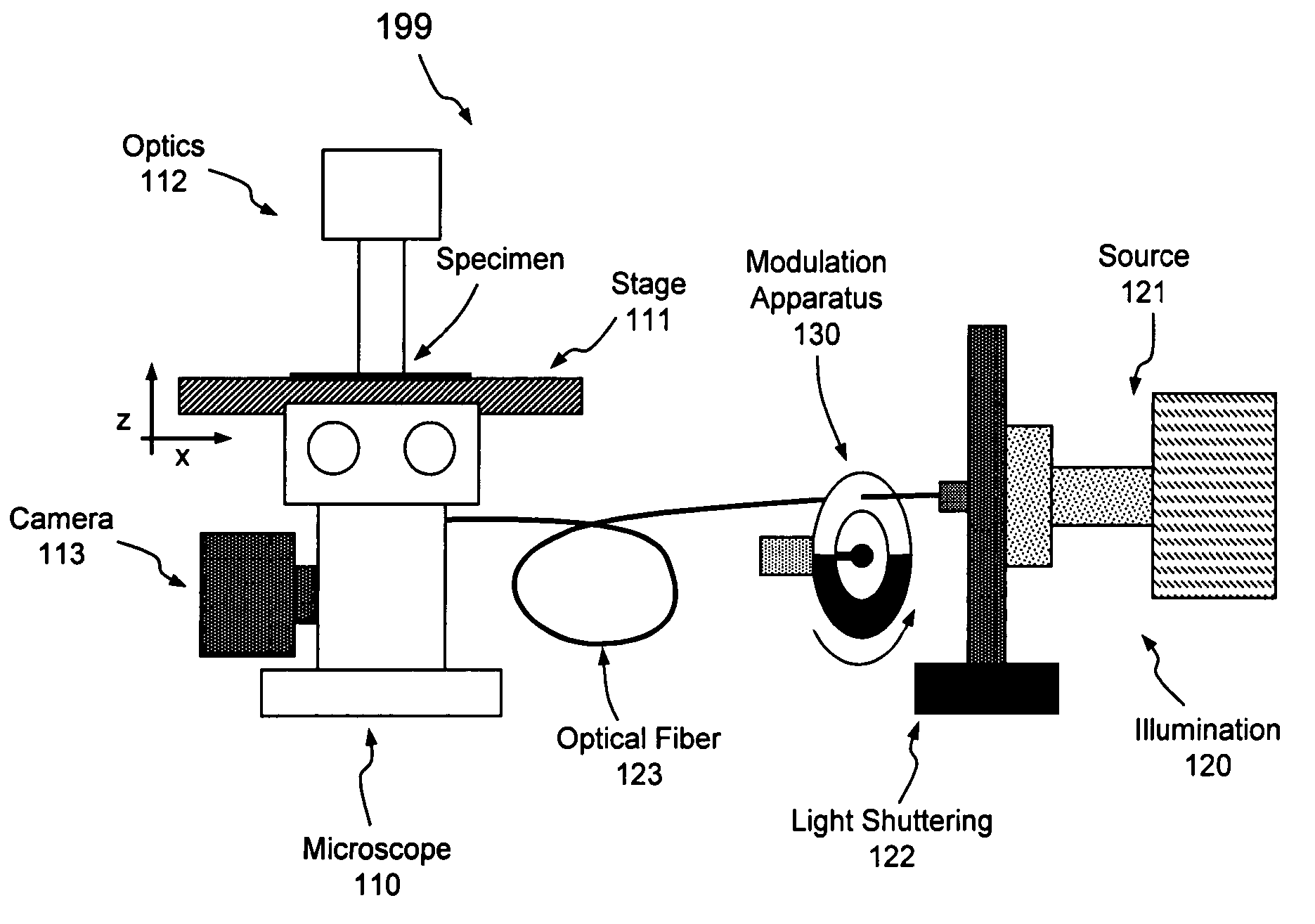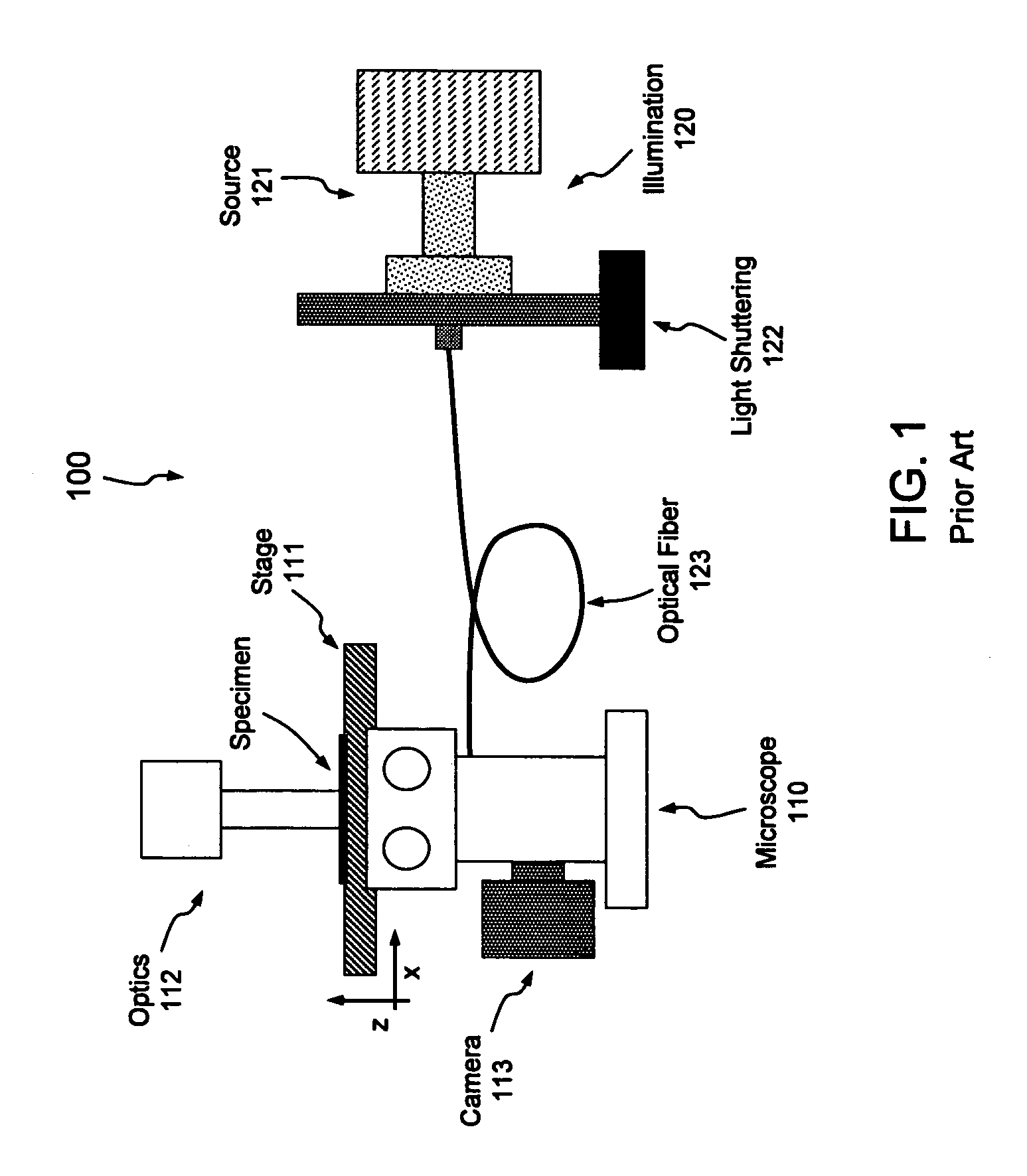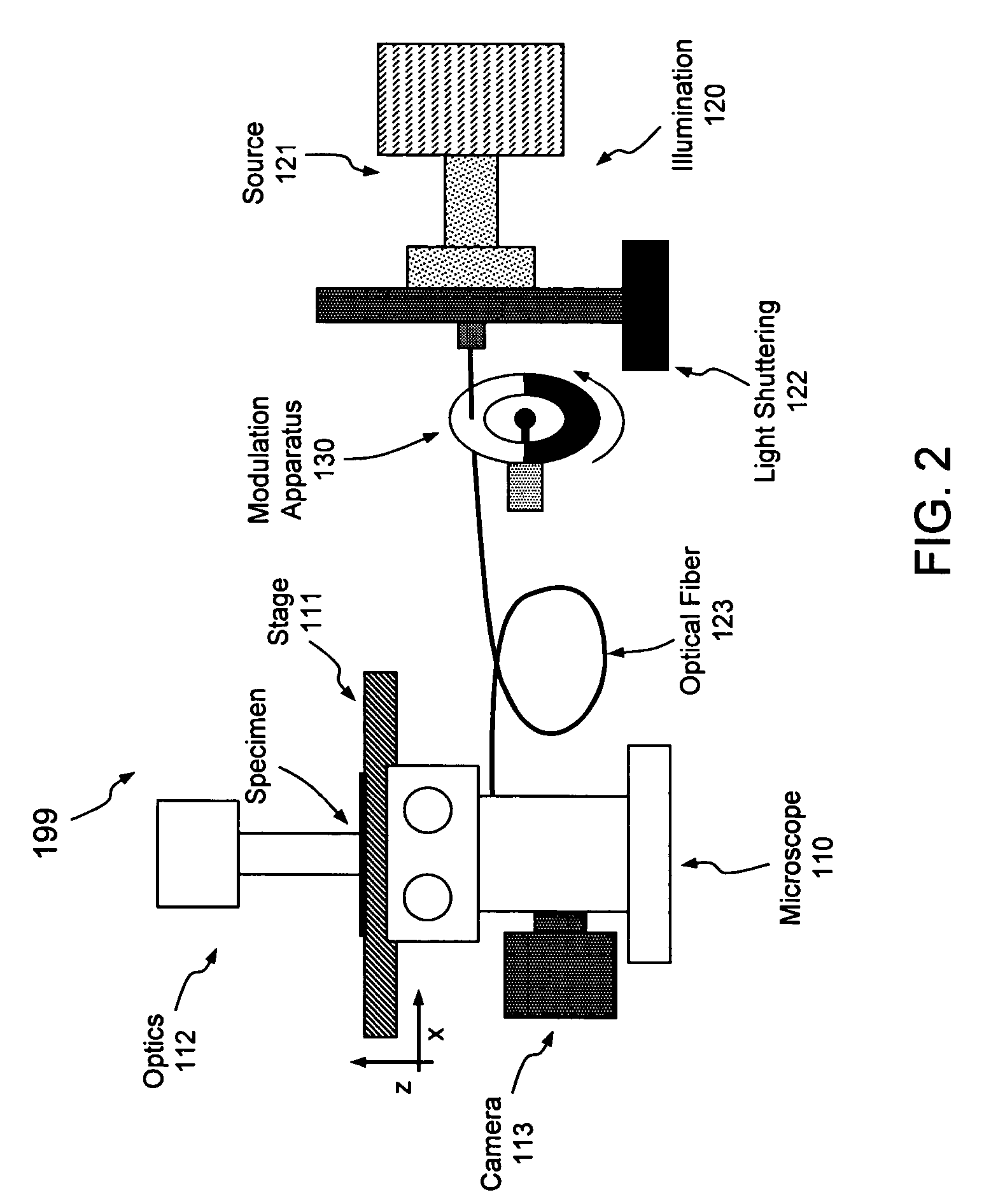System and method of illuminating living cells for imaging
a living cell and imaging technology, applied in the field of living cell imaging illumination, can solve the problems of increasing the probability, photobleaching, and photodamage in conventional fluorescence microscopy techniques, so as to reduce the coincidence of multiply excited electrons, minimize the rate of photobleaching and photodamage, and facilitate the reduction of both the photobleaching and the photodamage
- Summary
- Abstract
- Description
- Claims
- Application Information
AI Technical Summary
Benefits of technology
Problems solved by technology
Method used
Image
Examples
Embodiment Construction
[0023]Aspects of the present invention pertain generally to a system and method of illumination allowing live-cell imaging with reduced photobleaching and photodamage effects. As set forth above, the longer electrons remain in the excited state, the more likely they are to form reactive chemical species such as super-oxides that lead to photobleaching and photodamage; in that regard, re-excitation of electrons that are already excited prolongs that excited state. As set forth in more detail below, if the excitation of the fluorochrome is pulsed or modulated at an appropriate frequency, however, each fluorochrome may be provided an opportunity to relax (i.e., return to the ground state and fluoresce) prior to re-excitation. The embodiments set forth below generally relate to a system and method of pulsing or otherwise modulating the intensity of illumination at a frequency operative to reduce such deleterious re-excitation of excited molecules or electrons.
[0024]Turning now to the dr...
PUM
 Login to View More
Login to View More Abstract
Description
Claims
Application Information
 Login to View More
Login to View More - R&D
- Intellectual Property
- Life Sciences
- Materials
- Tech Scout
- Unparalleled Data Quality
- Higher Quality Content
- 60% Fewer Hallucinations
Browse by: Latest US Patents, China's latest patents, Technical Efficacy Thesaurus, Application Domain, Technology Topic, Popular Technical Reports.
© 2025 PatSnap. All rights reserved.Legal|Privacy policy|Modern Slavery Act Transparency Statement|Sitemap|About US| Contact US: help@patsnap.com



